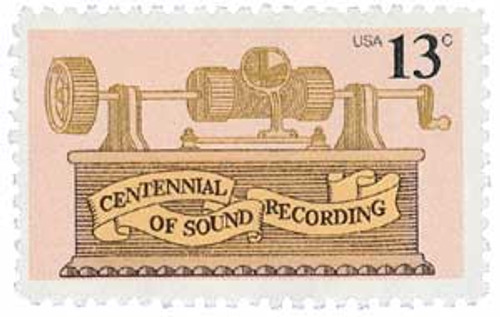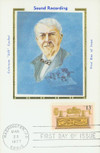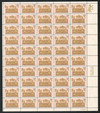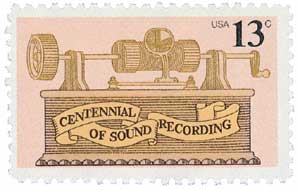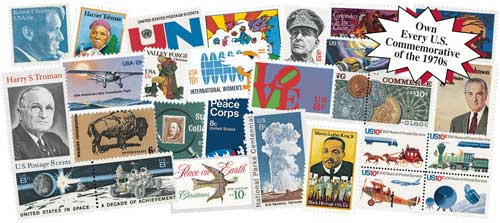
1977 13c Sound Recording
# 1705 - 1977 13c Sound Recording
$0.35 - $33.50
U.S. #1705
1977 13¢ Phonograph Centenary
Issue Date: March 23, 1977
City: Washington, DC
Quantity: 176,830,000
Printed By: Bureau of Engraving and Printing
Printing Method: Lithographed, engraved
Perforations: 11
Color: Multicolored
U.S. #1705 commemorates the 100th anniversary of Thomas Alva Edison's invention of the phonograph. The stamp also honors the development of the recording industry.
Thomas Alva Edison invented the first practical phonograph in 1877. That early device used tinfoil wrapped around a cylinder to record vibrations created by sound. The sounds thus recorded could be played back. The stamp was released during the 9th Annual Cultural Award Dinner of the Recording Institutes of America, Inc.
U.S. #1705
1977 13¢ Phonograph Centenary
Issue Date: March 23, 1977
City: Washington, DC
Quantity: 176,830,000
Printed By: Bureau of Engraving and Printing
Printing Method: Lithographed, engraved
Perforations: 11
Color: Multicolored
U.S. #1705 commemorates the 100th anniversary of Thomas Alva Edison's invention of the phonograph. The stamp also honors the development of the recording industry.
Thomas Alva Edison invented the first practical phonograph in 1877. That early device used tinfoil wrapped around a cylinder to record vibrations created by sound. The sounds thus recorded could be played back. The stamp was released during the 9th Annual Cultural Award Dinner of the Recording Institutes of America, Inc.

